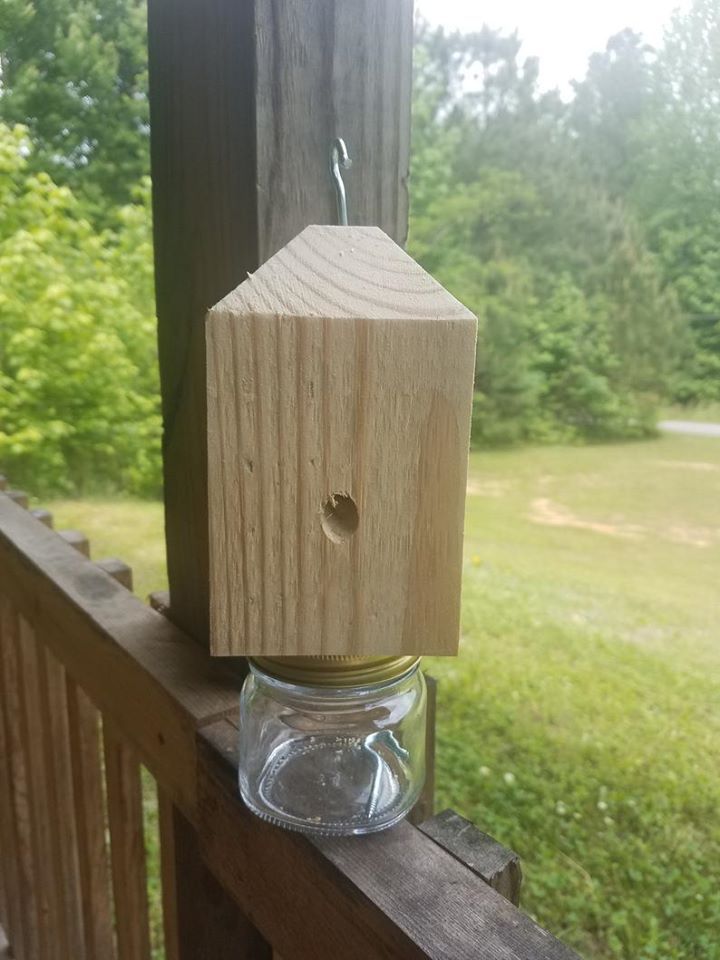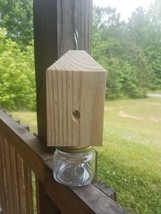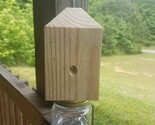Rendered at 06:00:14 12/08/25
Sign up and get $15.00 bCredits free to use at checkout and another $5.00 bCredits when you make your first purchase. More info
Envío gratis
19 recent views
Carpenter/Wood Bee Trap
€17,17 EUR
Sign up and get $15.00 bCredits free to use at checkout and another $5.00 bCredits when you make your first purchase. More info
Los buques de
United States

Share & earn! Sign in, share this or any listing, and you’ll get commission when it sells.
Learn more
Las opciones de envío
Los buques de 5 business days Detalles
No hay precio de envío se especifica en ES
Los buques de
United States

La política de devoluciones
None: All purchases final
Protección de compra
Información del catálogo
Opciones de pago
PayPal accepted
PayPal Credit accepted
Venmo accepted
PayPal, MasterCard, Visa, Discover, and American Express accepted
Maestro accepted
Amazon Pay accepted
Nuvei accepted
Las opciones de envío
Los buques de 5 business days Detalles
No hay precio de envío se especifica en ES
Los buques de
United States

La política de devoluciones
None: All purchases final
Protección de compra
Información del catálogo
Opciones de pago
PayPal accepted
PayPal Credit accepted
Venmo accepted
PayPal, MasterCard, Visa, Discover, and American Express accepted
Maestro accepted
Amazon Pay accepted
Nuvei accepted
Rasgos del artículo
| Categoría: | |
|---|---|
| cantidad disponible: |
96 En stock |
| Condition: |
New |
| Material: |
Wood |
| Color: |
Brown |
| Country/Region of Manufacture: |
United States |
Detalles del anuncio
| Las políticas del vendedor: | |
|---|---|
| Envío de descuento: |
Vendedor paga el envío para este artículo. |
| Precio de descuento: |
10% De descuento w / $50.00 pasó |
| Publicado en venta: |
Más de una semana |
| Artículo número: |
825774241 |
Descripción del Artículo
Carpenter bees get their common name from their habit of boring into wood. Carpenter bees do not eat wood but cause damage to structures by drilling circular holes to create tunnels inside wood. Unlike other common bees, such as honeybees and bumble bees that live in colonies, carpenter bees are not social insects and build individual nests into trees outdoors or into the frames, eaves or sides of buildings. Adult carpenter bees overwinter in abandoned nest tunnels where they have stored limited pollen to survive the colder temperatures. The bees that survive the winter will emerge in the spring to feed on nectar, mate and build galleries. They may reuse an already existing gallery or they may excavate new galleries. Female carpenter bees chew circular holes through wood to make individual galleries to lay eggs and protect their larvae as they develop. They are particularly inclined to build their galleries in soft, unpainted and worn wood, although some species may prefer hardwood. Wooden structures on the property, like decks and fences, are also prone to carpenter bee infestations. These work to save your wood structures without using pesticides that harm other useful insects. Honey bees will not go into the holes so you are not harming them. Traps are made from untreated pine . Comes with hanging hardware and glass jar- these really work! Jar and hardware may vary from pic
Get an item reminder
We'll email you a link to your item now and follow up with a single reminder (if you'd like one). That's it! No spam, no hassle.
Already have an account?
Log in and add this item to your wish list.





